The thriving city-state of Singapore feels like a world apart from many other places in Southeast Asia. It’s a lot more developed — and if you’re wondering if Singapore is worth visiting, I’ve got some tips to help you decide in another post.
One misconception is easy to clear up though: you absolutely can stay in Singapore on a budget.
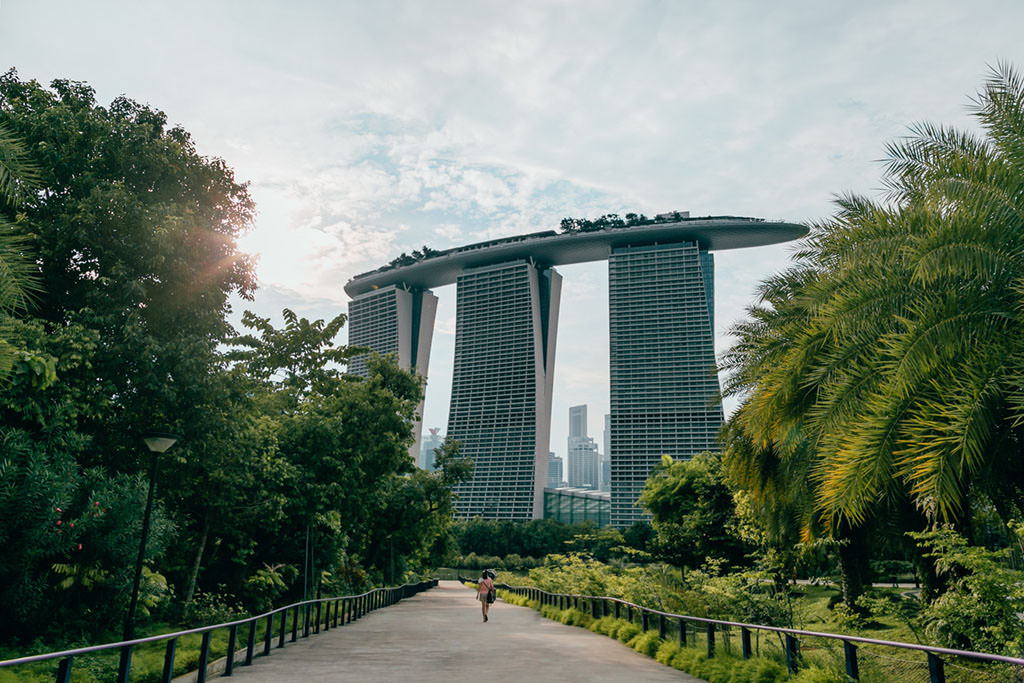
It will clearly never be as inexpensive as other neighboring Southeast Asian countries, but you also won’t have to sell a kidney.
Luckily, essential things like food and transportation can be very cheap. And there are plenty of backpacker hostels in Singapore where a bed is still reasonably priced.
Here are some tips for enjoying Singapore on a budget.
Plan your stay in Singapore
Is Singapore expensive?
To be clear, yes, Singapore is an expensive country overall. It’s often ranked as one of the most expensive countries in the world, so it’s pricey even from a European or American perspective.
To be a permanent resident in Singapore in particular is not cheap. Due to a lack of space housing is priced at a premium, many products (like alcohol) are highly taxed, and to own a car in Singapore you need to spend around $100k USD… and that’s just for the road permit you need before buying a car!
Visiting Singapore can also be expensive, but it depends. If you spend at a Singapore level on accommodation and dine in fancy restaurants it will easily be the most expensive destination in Southeast Asia.
But if you visit as a budget traveler, you can still easily keep costs under control by using public transport, using cheap budget accommodations like hostels, and eating at food markets called Hawker Centers.
Where to stay in Singapore
If you’re on a tight budget then hostels are always a good way to save money in Singapore. In the table below are a few backpacker hostels in Singapore that I recommend.
Most travelers base themselves in or near Chinatown, Kampong Glam (the Arab quarter), or Little India.
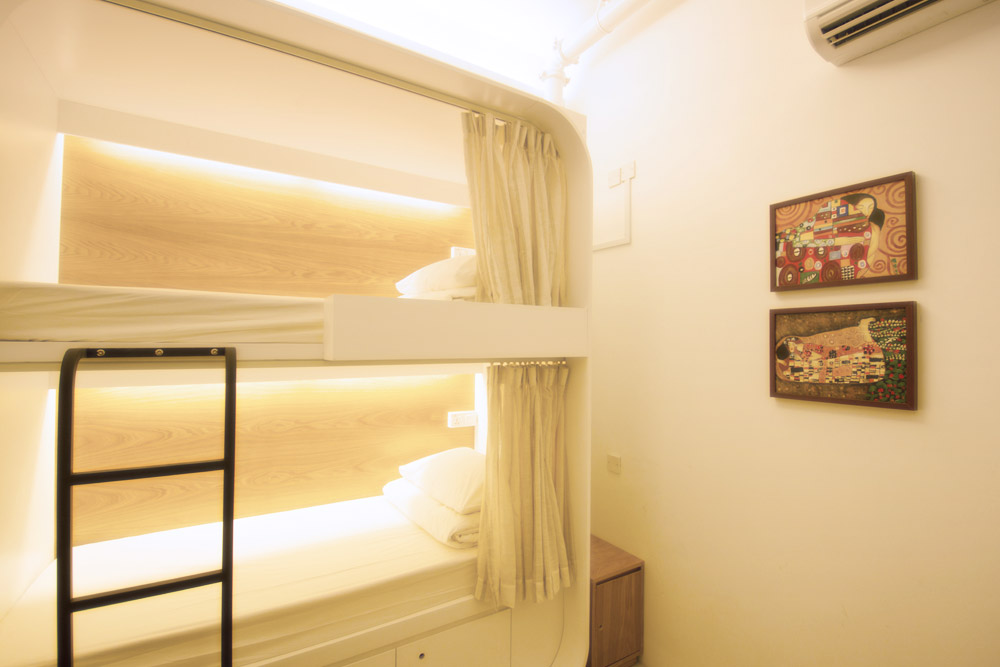
Even though I like to stay in hotels or guesthouses most of the time on my trips, I still go for hostels in Singapore as this can save you so much money. Of course, there are backpacker-style hostels similar to the ones you find in other Southeast Asian countries, though there are also a fair number of capsule hostels and nomad hostels for those who prefer a more hotel-like environment.
If you’re looking for something more private, you can find some nice rooms on Airbnb starting at about $40 or €35 a night.
Great hostels in Singapore
$$ hostel
Fine Stones
Modern hostel located in Kampong Glam. Dorms and several private rooms available.
$$ hostel
The Hive
Cheap for Singapore, located a few blocks from Little India. Stayed here a few years ago and recommend it!
$ hostel
5footway.inn Project Ann Siang
Stayed here on my most recent visit. Clean & comfy, with roof terrace looking out on the Buddha Tooth Relic Temple in Chinatown.
Free or cheap things to do
There is plenty to see and do in Singapore, and luckily some of the best activities are free, while others are accessibly priced.
Here are some of my top picks:
Stroll through the Gardens by the Bay

Since opening in 2012, the Gardens by the Bay quickly became the city’s most iconic site. Your visit won’t be complete without seeing the massive Cloud Forest Dome (containing the world’s largest indoor waterfall) or the Supertree Grove (home to futuristic tree-like vertical gardens, with a light show at night).
Cost: outdoor gardens are free, walking the skyway is $8 SGD, and the cloud forest is $28 SGD
Visit the Marina Bay Sands & Mall
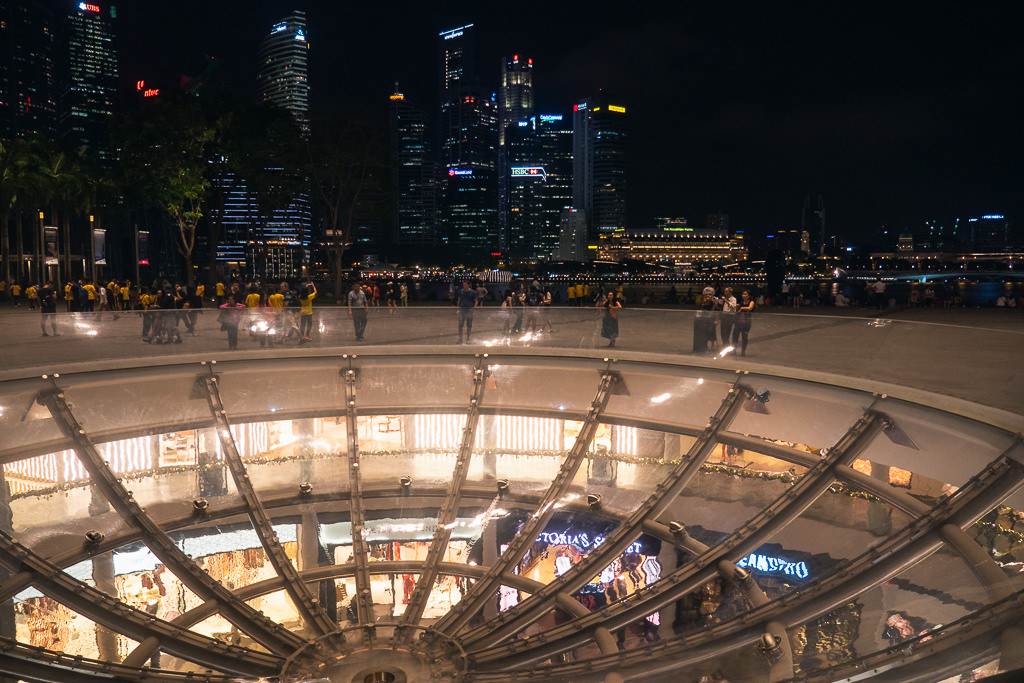
At the Marina Bay you can experience Singapore in its full futuristic glory. Squint your eyes a bit and parts can seem like a future Earth from Star Trek. There’s a multi-level mall with an indoor canal, a bayfront boulevard, and great views of the financial district’s skyline. Louis Vuitton also set up an enormous shop here on a kind of mini-island, accessed via an underwater tunnel. It’s a pretty extravagant place.
At the top of the Marina Bay Sands building is a hotel with an infinity pool. It became a ridiculously sought-after Instagram spot, though these days it’s open only to hotel guests. There’s also an observation deck giving panoramic vistas of Singapore’s cityscape and as the shipping lanes through the Singapore Strait.
Cost: free to walk around, $23 SGD for the observation deck
Budget travel hack: you can sneak into the Marina Bay Sands observation deck for free by telling the staff “you’re just going to the bar”. Walk in and they’ll assume you’re a hotel guest.
Eat at a Hawker Center
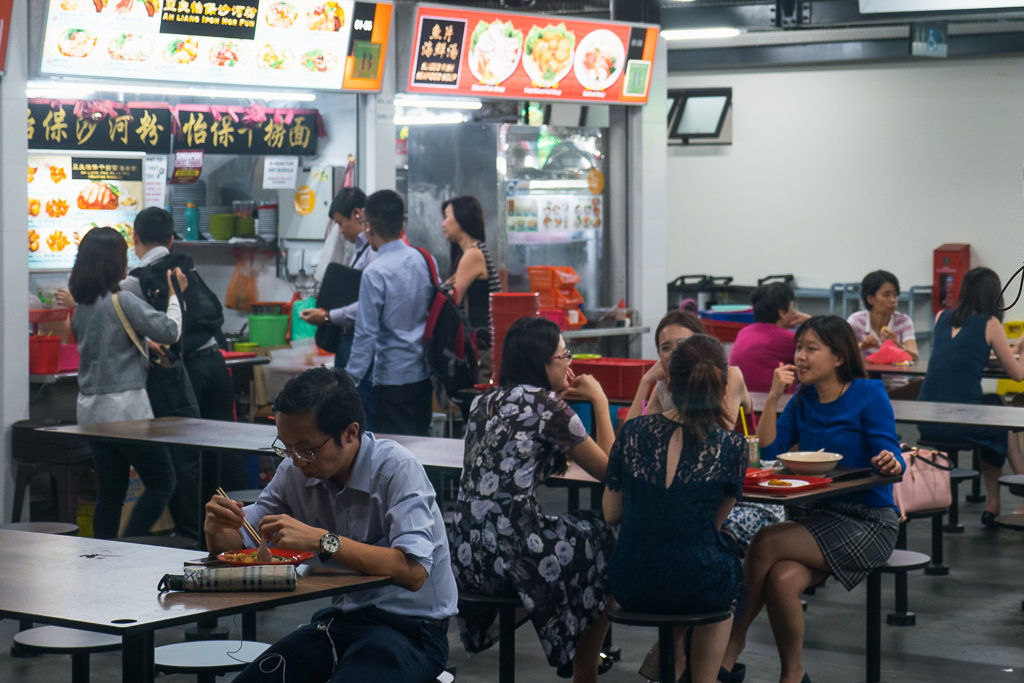
Looking for a cheap eat? Then look no further than Singapore’s many hawker centers, which are open-air complexes with stalls selling lots of affordably priced food.
First introduced in the 1970s to deal with rampant street hawking at the time, the centers are now a unique aspect of Singaporean culture. They’re basically a regulated form of street food with proper hygiene standards put in place. Many migrants from around Asia ended up working in the hawker centers, so you can sample a huge variety of cuisines. Whether it’s Indonesian, Chinese, Malay, Indian or Thai, you can get it here.
You can find a good list of Hawker centers here. A slightly more hipstery version of the concept also exists at Gluttons Bay, which offers wonderful bay views and some of the best cooks (drawn from other centers) making their signature dishes.
Cost: a few Singapore Dollars for a tasty meal
Explore colorful Chinatown
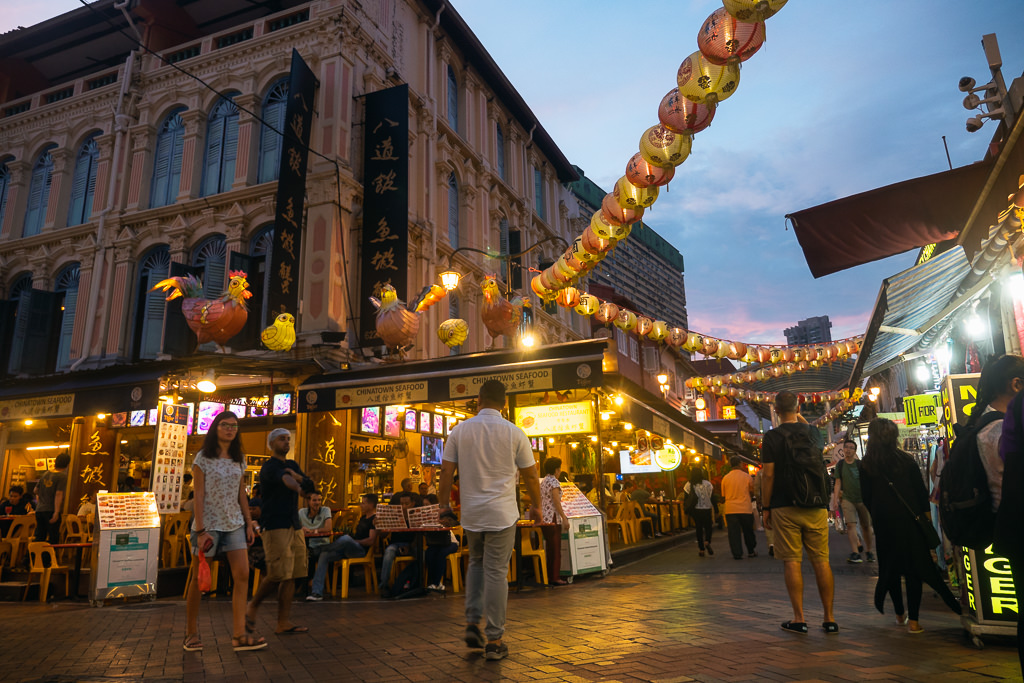
In the old Chinatowna, the futuristic high-rises and business districts give way to British colonial architecture with pastel colors. Several Hindu temples, mosques, and other places of worship are also scattered across the town. There is an excitement and hustle in this district that makes it one of the most popular areas for visitors to go. It’s great for a wander, and a good area to find a nice hotel or hostel too.
You can get to Chinatown with the MRT metro and explore by foot from there. Follow this self-guided temple walking tour and be sure to pass by the Hindu Sri Mariamman Temple and Buddha Tooth Relic Temple — some fine examples of the cultural and religious melting pot that is Singapore.
Cost: free
Wander through Haji Lane & Little India
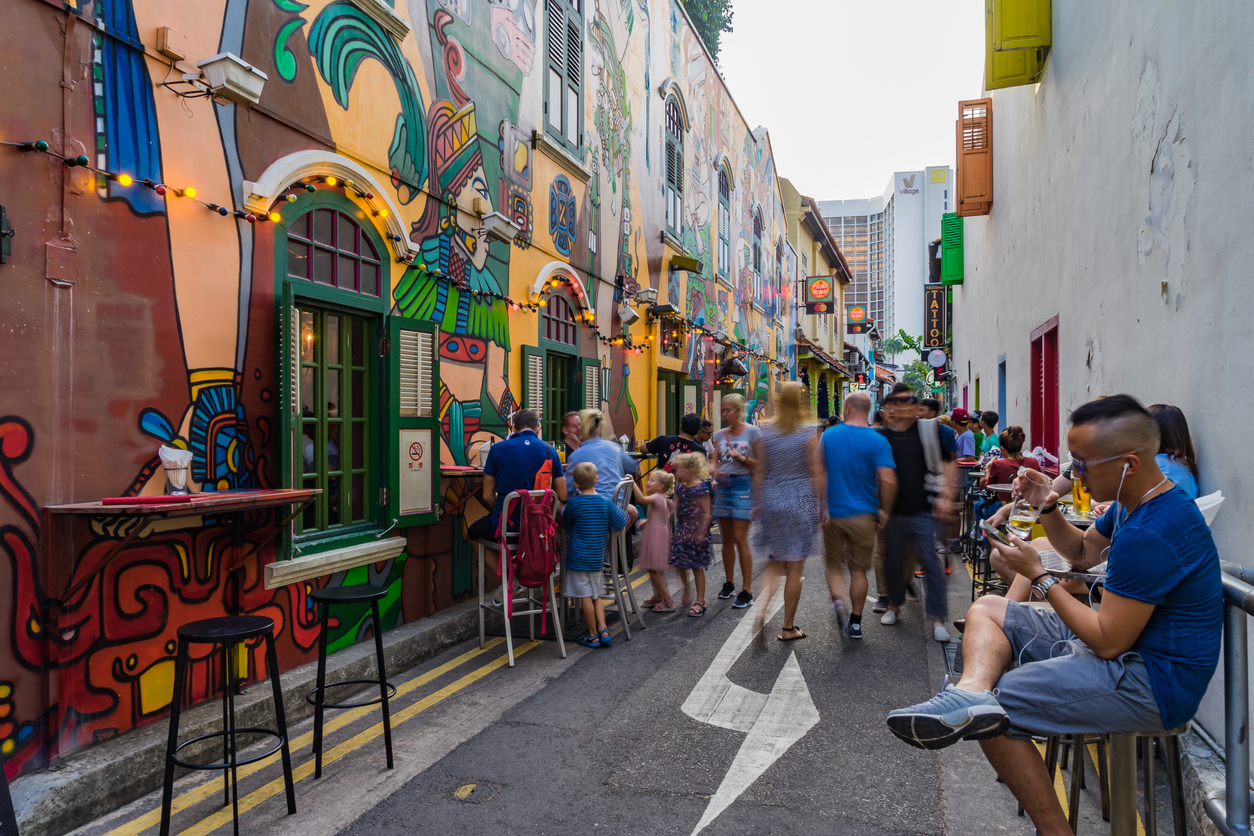
Singapore can sometimes be orderly to a fault, but its narrowest street reminds you that pockets of creativity do manage to thrive.
With its boutique shops, Middle Eastern cafes, and street art-covered facades, Haji Lane is known as Singapore’s original hipster enclave. Until the 1960s, the shophouses were used as lodges for Hajj pilgrims on their way to Mecca. Nowadays, they’re home to many trendy fashion shops.
The adjacent Arab Street and surrounding neighborhood form Kampong Glam, Singapore’s vibrant Muslim quarter. You can learn more about its history at the Malay Heritage Centre, which is free to enter.
Just a stone’s throw across the Rochor River is Little India, another one of Singapore’s vibrant ethnic neighborhoods. While you’re there, don’t miss seeing the colorful Sri Veeramakaliamman Hindu temple.
Cost: free
Escape to Singapore’s green spaces
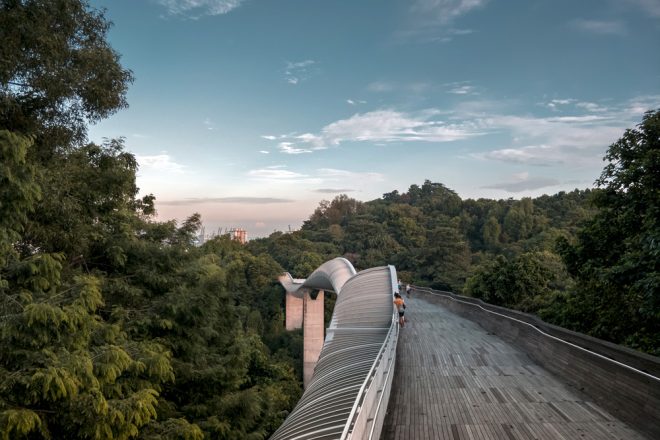
Singapore is sometimes dubbed the “Garden City”. It does have quite a few green spaces! Apart from the Gardens by the Bay, I liked climbing the hill in Mount Faber Park, where you can get a nice view of the city and walk across the unique Henderson Waves pedestrian bridge.
And in Bukit Timah Nature Reserve, which is only about 12km from downtown, you can enjoy a wonderful slice of primary rainforest filled with walking trails.
Cost: free
Grab a drink at Clarke Quay
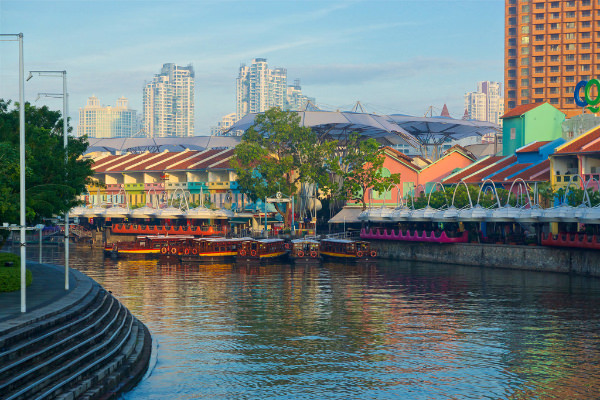
Clarke Quay is a historical riverside area where ships once docked during the British colonial times. Nowadays, the restored warehouses are occupied by many restaurants and nightclubs.
Expect to find more a commercial than a historical area (I mean… there’s a Hooters here). That said, it’s definitely nice to have a cold beer on the terrace on a sunny afternoon, or to go for a big night out.
An interesting bar is the Beer Market, where the price of different beers fluctuates based on demand, with prices displayed much like at a stock exchange.
Cost: the price of your drinks
Budget travel tip: every Wednesday is Ladies’ Night at Clarke Quay making this a big night for some cheap partying for female travelers. The bars have all kinds of offers like ‘5 free drinks’, unlimited free martinis, or 2-for-1 deals.
Enjoy the amazing airport
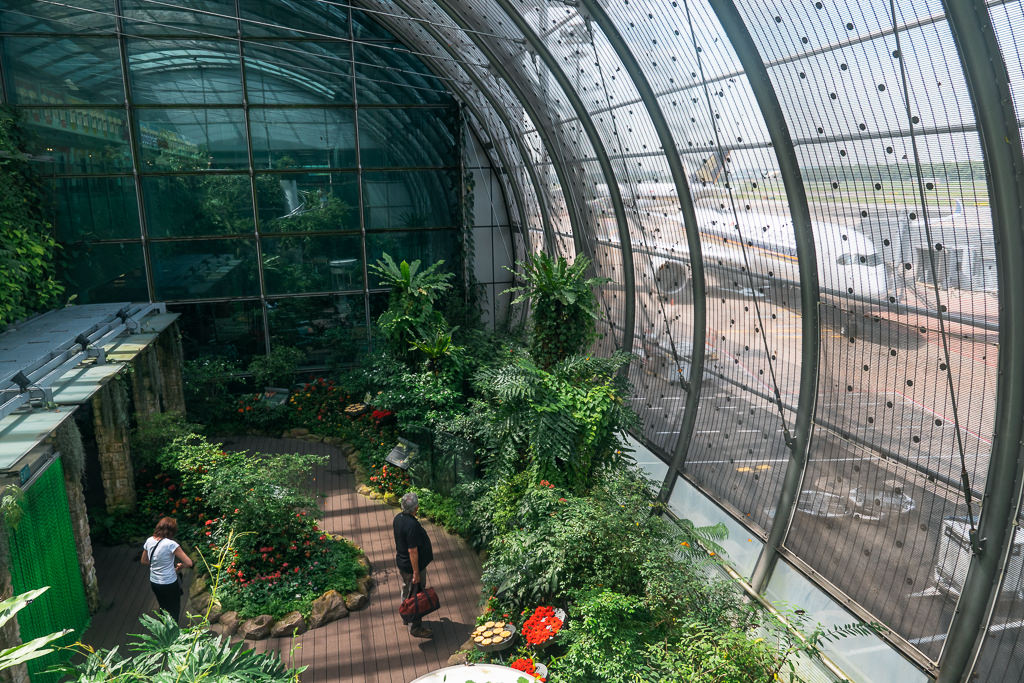
It might seem silly to mention the airport as a top place to see in Singapore, but it honestly is amazing! Changi Airport keeps winning awards for its comfort and amenities, and it might well be my personal favorite airport in the world.
There’s a butterfly garden, a cactus garden, a swimming pool with jacuzzi, a free movie theatre, and much more. No, these aren’t hidden away inside some VIP lounge, but freely accessible once you get past security. A new 10-story indoor canopy park opened in 2019.
Cost: free if you’re flying
Travel costs for Singapore
So how expensive is Singapore really?
I guess the annoying answer is: ‘it depends’.
Singapore is easily the most expensive place in the region, but that doesn’t mean you can’t get by on a budget.
Transportation doesn’t have to cost much, thanks to Singapore’s excellent metro system. You can get from one side of the island to the far opposite side (about 50km) for just 2 Singapore dollars (about $1.50 US), and it’s less for shorter trips. Not bad! The MRT metro connects all the key places as well as to Changi International Airport.
Food can be very inexpensive too. It really depends on where you eat. Restaurants charge just as much as you’d expect in any ‘Western’ countries. But if you go to any of Singapore’s famed hawker centers, you can get a solid meal for just a couple of bucks.
Accommodation is likely to be your biggest expense. A room in a budget hotel costs at least about USD $50 a night, and you can expect a hostel dorm bed to cost around USD $15 to USD $20. That’s not unusual by international standards, but this can be jarring if you just spent, say, USD $8 a night for a private bungalow in rural Laos. Airbnbs and hostels are nice options in Singapore. If you’re not into sharing a room in a hostel, there are quite a few boutique capsule hostels (which give you a private ‘pod’).
Ultimately, Singapore can be as cheap or as expensive as you want.
If you stay in hotels, take taxis, dine in restaurants, and drink sumptuous cocktails in Singapore’s most trendy bars, you could easily burn through $200+ USD a day.
But if you stay in hostels, use the metro system, avoid most of the ticketed tourist sites, and eat at hawker centers, you can still get by on about $40 USD a day.
Travel tips
Don’t let taxis refuse you
I wrote earlier that Singapore is nearly free of hassle. Well, the only frustration I’ve had is that some taxis may refuse to take you, suddenly deciding it’s time to ‘change shifts’ when your destination is not convenient for them.
This behavior is actually illegal, and if you point this out to them they’ll happily take you where you need to be.
Sentosa Island is not that exciting
Sentosa Island is often mentioned as a great place to go, but honestly I don’t think it’s that interesting. It’s essentially an artificial simulation of a tropical island, filled with theme parks, golf courses, and hotels. The beach looks out onto one the world’s busiest shipping lanes, so the waters are littered with container ships and oil tankers.
Sentosa might be a good place for entertainment for residents and families, but for visitors who want to explore in Singapore, it’s probably not that compelling. If Singapore happens to be just a stopover for you on a Southeast Asia trip, I’d recommend going to a real tropical island (of which there are so many in neighboring countries).
Try the local specialities
Be sure to try one of the national dishes, simply named “chicken rice”. It looks like just some plain rice with plain chicken, but don’t let its humble appearances deceive you. What seems like a dull plate of food is actually the product of an elaborate cooking process in which the meat is gradually and gently steamed… with a very tender and delicious result.
Another famous dish in Singapore is the Chili Crab. Oh, and the eponymous gin-based cocktail Singapore Sling (once originating from the Raffles Hotel bar) is not a bad choice for a drink!
Some links may be affiliate links, meaning I may earn commission from products or services I recommend. For more, see site policies.
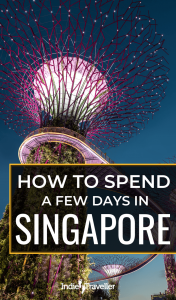
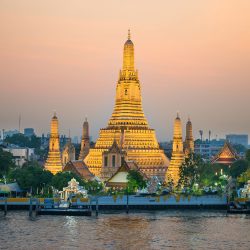
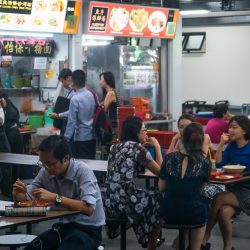




Hello Marek,
I would like to ask you about travel insurances in Singapore..
Woud you advice me to subscribe this policy ? https://www.axa.com.sg/travel-insurance
Thanks !
Are you from Singapore? Because this is insurance for Singaporeans. Unless you’re local you should get travel insurance in your own country. I have more info on travel insurance here.
Hi Marek, Love your blog. My favourite free activity in Singapore is to visit the National Gallery by the Padang. Admission is FOC unless you want to see a particular guest exhibition. After exploring the museum, which was the Parliament House at independence, go to the fifth floor and walk up a flight of steps. What greets you is, for me, the most amazing photo-op. Go check it out.
That’s a great tip, thanks for sharing Marigo!
Hello Marek,
This is a great article! It’s exactly what we need as we all know Singapore is the most expensive in the region, even before we get there. My wife, Sara, and I will make our first visit sometime in August or so. I can’t wait to blog about some of the places you mention!
Many thanks,
Will
Glad you found it useful! Hope you enjoy Singapore 🙂
Hi Marek,
Awesome article, I love it! I’ve placed a link for it on my website to provide my readers with the best information possible, I hope you don’t mind. Hopefully they’ll enjoy it as well, providing you with great exposure. Check it out here:
https://angelinaroundtheworld.com/2-days-singapore/
Love,
Angelina DiGiovanni
Hi Angelina. Great blog and thanks for the link! 🙂
I absolutely loved SIngapore. People had told me it would be a boring banker city, and it’s absolutely not true. It’s a colorful city with amazing vistas and delicious food. People are very friendly, and it’s a 24/24 place like NYC.
You just can’t get bored there!
Wow it’s a amazing post about Singapore on a budget mate. I’m also planning to travel Singapore soon with my colleagues. I don’t know much information about it but you gave complete information, when I was reading was able to imagine everything you have shared. After the travel I will let you know and share my experience with you.
Definitely let me know I missed something! I’ll be back in Singapore next month so will hopefully be able to expand this page 🙂
Singapore is a very beautiful country with breathtaking views, so make sure to bring a very good camera!
Totally agree with this article stating that it can be quite expensive, but at the same time, you could find very cheap foods in singapore! Traditionally, all the cheap foods come from hawker centres (outdoor food court?).
Try to avoid buying alcohols in bar (unless you visit during their happy hour) because it can be quite expensive. (USD 12 for 1 pint?)
Make sure to visit their Gardens by the bay and SEA Aquarium because it is really worth the experience.
Accommodation wise, if you’re really on a tight budget, you could stay in a hostels at chinatown (there’s alot of good hostels/capsule hotels in Chinatown/ Kampong Glam etc.)
I recommend you guys to take a look at Cube Boutique Capsule Hotel in Smith Street (Chinatown). They are located just above a michelin star restaurant (Not kidding) and its the cheapest micheling star restaurant in the world! (1 dish = > USD 4)
Be sure to take loads and loads of picture!!
For cheap eats everyone should check out Maxwell’s food centre, pretty sure it’s china town region. We picked up lunch for £2, full of locals and the food was amazing.
I was lucky enough to live in Singapore. I’d also add visiting the actual rainforest (there’s a park in the middle of the city) as well as some of the uninhabited islands off Singapore to see what it was like before it became the Singapore that we know. Also must eat: laksah!
This is great! Been planning to go to SG and I think this would help me big time. Will surely save this. Looking forward to more helpful posts.
Wow it’s a great post.I am planning to travel Singapore next month with my friends and i don’t how to explore the place.But you solve the and gave the information.Thanks for the info and after the travel i will let you know how i enjoy the place
Great Post about Singapore on a budget mate. I was kinda looking forward in reading about looking where to eat chili crab for a meager cost! cheers 🙂
Don’t forget the ice cream sandwiches! I loved these when I visited Singapore. -> http://www.foodinmouth.com/restaurant-reviews/2013/08/ice-cream-on-the-sidewalk-in-singapore-travel-summer.html
Does it make sense to stay in Johor Bahru for the night and do a day trip to Singapore?
Been traveling to Singapore all my life. 5 times already – first trip when I was 3 years old. So Singapore was my first travel destination. Last visit was in 2013. Loved the place. Yes accommodation is expensive – why don’t you try AirBnb – you can get a good room for around US $80. Dorms are not just my style
Hi! I really like this post, it’s really interesting.
When I read it I was able to imagine everything you’ve written. The photos did the remaider 😉
You’ve included in few words the essential things to see and to do.
Well done!
Singapore could be our next trip!
A great post Marek. Very useful.
You forgot about the amazing rainforest park in central Singapore! If you are in Singapore, dont forget about this beautiful amazing place. The contrast is so big, skyscrapes on one side and nature on the other. we realllly like singapore.
http://bruinenblond.nl/backpacken-in-de-aziatische-metropool-singapore/
Thanks for sharing. Goeie tip! 🙂
Thanks for the mention, Marek. Dat is aardig van je 🙂
Det var så lidt. It’s an awesome post! 🙂